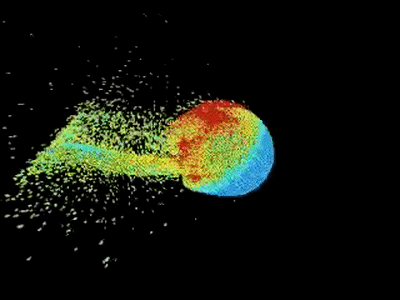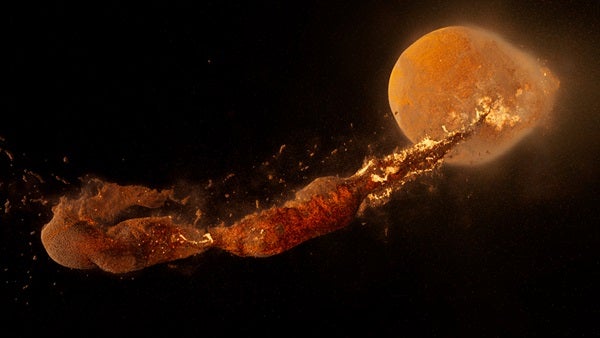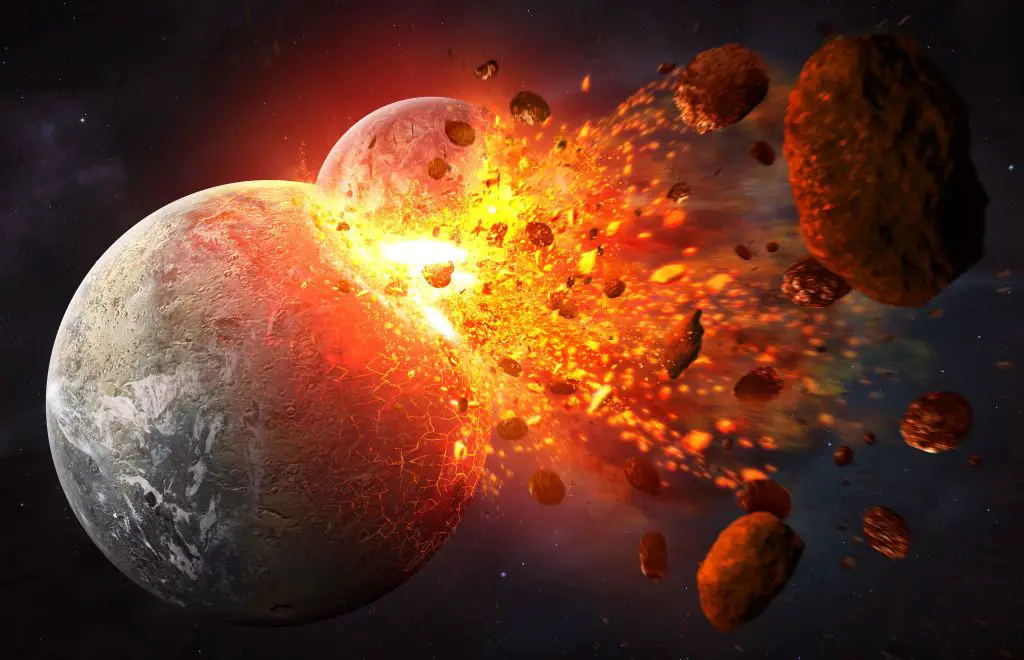Key takeaways:
- The Giant Impact Hypothesis suggests the Moon formed from debris after a Mars-sized object, Theia, collided with Earth around 4.5 billion years ago, though this theory doesn’t fully explain why lunar rocks are so similar to Earth’s.
- New simulations from Durham University indicate the Moon might have formed within hours of the Theia impact, offering fresh insights into its rapid evolution and its early characteristics.
- Using high-resolution simulations with up to 100 million particles, scientists found that previous, lower-resolution models may have missed crucial collision details, altering previous theories about Moon formation.
- The new model suggests a Moon made of about 60% Earth material, yet this doesn’t fully account for the close isotopic match between Earth and lunar rocks, suggesting more mixing would be needed.
- Upcoming Artemis missions may help resolve Moon formation mysteries by gathering samples from unexplored lunar regions, offering new clues into the Moon’s and Earth’s intertwined histories.
_______________
New simulations suggest the Moon may have formed from Earth’s debris, not just Theia’s.

Earth’s moon might have formed just hours after a colossal collision, according to new findings by scientists at Durham University’s Institute for Computational Cosmology. Roughly 4.5 billion years ago, a Mars-sized body, Theia, struck a young Earth in a monumental collision believed to have produced a debris disk that eventually formed the Moon. This concept, known as the Giant Impact Hypothesis, has been the leading explanation for decades. However, recent high-resolution simulations provide a twist: the Moon might have formed immediately following the impact, possibly explaining some unresolved issues with prior theories.
A New Take on the Giant Impact Hypothesis
Durham scientists used advanced numerical modeling to simulate the Theia-Earth impact about 400 times, using up to 100 million particles—a far higher resolution than previous studies, which used only hundreds of thousands. This increase in computational detail allowed them to explore nuances of the collision more precisely. “We went into this project not knowing exactly what the outcomes of these high-resolution simulations would be,” said study lead Jacob Kegerreis. These findings were published in the Astrophysical Journal Letters, marking a significant advancement in understanding Moon formation dynamics.
The simulations, performed using smoothed particle hydrodynamics, allowed the team to replicate gravity and pressure conditions at a much finer scale, revealing the potential for a “direct formation” of the Moon within hours of the collision. This immediate formation model challenges the traditional debris-disk theory by showing that the Moon could have coalesced directly from the impact materials in a single swift process rather than gradually over time.

The Lunar Puzzle and Unanswered Questions
Despite providing a compelling scenario for the Moon’s rapid formation, the study also highlights gaps that remain unresolved. Analysis of Moon rocks brought back by the Apollo missions revealed that the Moon’s isotopic composition closely mirrors that of Earth. Yet, the simulations show a Moon formed from only about 60% Earth material, not quite enough to account for the extreme isotopic similarities. According to planetary scientist Robin Canup from the Southwest Research Institute, even with a majority of proto-Earth material, a greater Earth-Moon isotopic difference would be expected. The study suggests that material from Theia and Earth could have formed a layered structure in the Moon, but Canup argues this theory lacks the likelihood needed to fully explain the isotopic resemblance.
This model offers new clues to the Moon’s unique attributes, such as its tilted orbit and relatively thin crust, though a complete picture remains elusive. Researchers hope future data will clarify these points, including upcoming lunar rock samples from NASA’s Artemis missions, which aim to explore untouched regions of the Moon. By analyzing rocks from its depths, scientists hope to add crucial evidence that will aid in either reinforcing or revising the current theories on Moon formation.
Unlocking Earth’s History Through the Moon
Exploring the Moon’s origin not only illuminates the early history of our celestial companion but also offers insights into Earth’s own formative years. According to study co-author Vincent Eke of Durham University, learning about the Moon’s formation process enhances our understanding of Earth’s evolution, since their histories are intricately linked. This work may also open up new theories about the development of other planets, helping scientists explore the effects of planetary collisions throughout the cosmos.





We confirmed this when Apollo brought back moon rocks which matched those of earth?
So the moon was an asteroid?
I love how both the Earth and Moon are basically just two cosmic blobs of liquid stone floating around in space.
Throughout their childhood, Earth and Theia lived in harmony but everything changed when gravitational disturbances attacked
I found it odd that millions of chunks of rock could form a solid sphere as the million year theory suggested.
The fact that the rocks were molten would make the sudden creation theory a much more believable moon creation theory
Wow! I’ve known of Theia for quite some time but for the moon to have potentially formed in just hours is astounding!
Imagine how supremly cool it would if some day we are able to positively identify one of those primodial debries from that collision that escaped from falling back into the primodial Earth or becoming part of the moon
Can you imagine being able to observe the formation of the moon and watching it happen in just a matter of hours? It is so cool to think about…